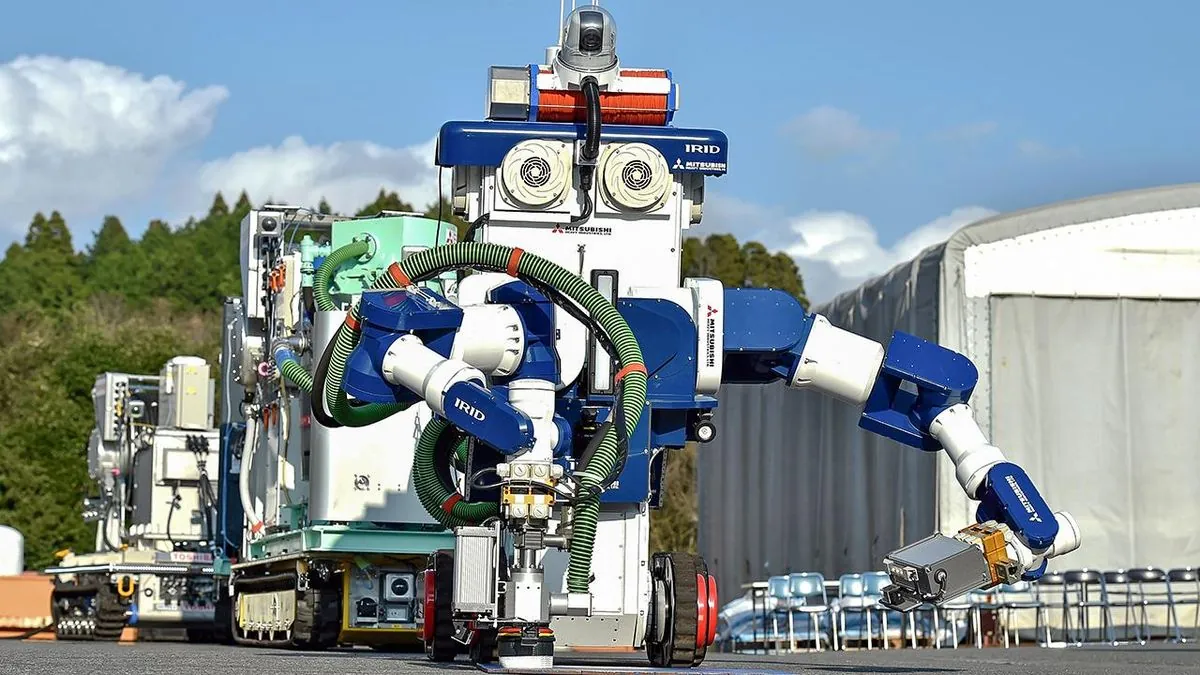On Tuesday, a crucial robotic mission at the Fukushima Daiichi nuclear power plant encountered a significant setback. The operation, aimed at retrieving the first sample of melted fuel debris from inside one of the damaged reactors, was halted due to video feed issues. This incident marks the second suspension in less than a month, underscoring the complex challenges facing the cleanup efforts.
The robot, named "Telesco", was designed to navigate the treacherous environment of the damaged reactor and collect a minute sample of the melted fuel. However, the mission was abruptly stopped when two of the robot's four cameras failed to transmit images to the remote control room. This visual data is critical for guiding the robot's precise movements and ensuring the safety of the operation.
The Fukushima Daiichi disaster, which occurred 13 years and 6 months ago, was triggered by a 9.0 magnitude earthquake and subsequent tsunami. It remains the most severe nuclear accident since Chernobyl in 1986, resulting in the evacuation of over 100,000 people and causing widespread environmental concerns. The accident was rated 7 on the International Nuclear Event Scale, the highest level possible.
Tokyo Electric Power Holdings Co. (TEPCO), the plant's operator, has been grappling with the monumental task of decommissioning the facility. An estimated 880 tons of highly radioactive molten fuel remains inside the three damaged reactors, posing significant risks and technical challenges.
The current mission's goal was to extract a sample weighing less than 3 grams, a seemingly small amount that could provide crucial data for the ongoing cleanup efforts. The robot's journey to the target area is expected to take a week, with another week required for its return, highlighting the painstaking nature of the operation.
"The sampling couldn't be carried out without the crucial visuals. We are investigating the cause, which may be related to high radiation affecting the equipment."
This setback adds to the growing list of challenges faced by the cleanup operation. The process is expected to cost over $200 billion and has led to a global reassessment of nuclear power safety. While the disaster resulted in no direct deaths from radiation exposure, its long-term impacts on Japan's energy policy and the surrounding environment are profound.
The government and TEPCO have set an ambitious 30-to-40-year target for the cleanup, a timeline that many experts consider optimistic. With approximately 17-27 years remaining in this projected timeframe, the recent setbacks highlight the need for continued technological innovation and perseverance.
As Japan grapples with the aftermath of the Fukushima disaster, the incident has sparked international debates on the future of nuclear energy. It has also led to increased investment in renewable energy sources within Japan, reflecting a shift in the country's energy strategy.
The suspension of the robotic mission serves as a stark reminder of the ongoing challenges at Fukushima. As cleanup efforts continue, the world watches closely, recognizing the implications for global nuclear safety and environmental protection.
